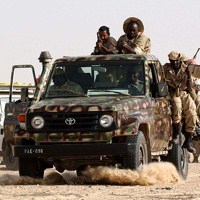For decades U.S. security policy has followed two distinct tracks. In Europe, the Pacific Rim and the Middle East, the extent of American national interests and the possibility of aggression by hostile states led to a direct approach with formal security treaties and the stationing of U.S. forces. In places like Latin America, Africa and, more recently, Central Asia, U.S. strategy was indirect, focusing on security assistance and the provision of advice and training. Partnerships were the coin of the realm. The idea was that other country’s militaries, helped by the United States, would take responsibility for security in their nations and regions.
This "economy of force" approach gave the United States some influence while keeping the costs low. But it also had limitations. When partner militaries proved ineffective or repressive, Washington often had to choose between writing a country off or shifting to direct involvement -- think Vietnam in the early 1960s. At times, conflicts that might have been prevented or kept small instead grew when America's strategic partners proved not up to the tasks Washington envisioned for them. Still, it was better than nothing.
During the Cold War, U.S. policymakers often stuck with flawed or repressive partners, assuming that friendly dictators and their armed forces were at least better than Soviet-backed communists. "He might be a son of a bitch," President Franklin Roosevelt is claimed to have said about a Latin American dictator, "but he's our son of a bitch." This attitude began to shift as the Cold War wound down. By the 1980s, many Americans, particularly those on the political left, were less inclined to tolerate repressive allies. In this new political context, the United States cast loose friendly dictators like Nicaragua's Anastasio Somoza, the Philippines' Ferdinand Marcos and Zaire's Mobutu Seso Seke.

